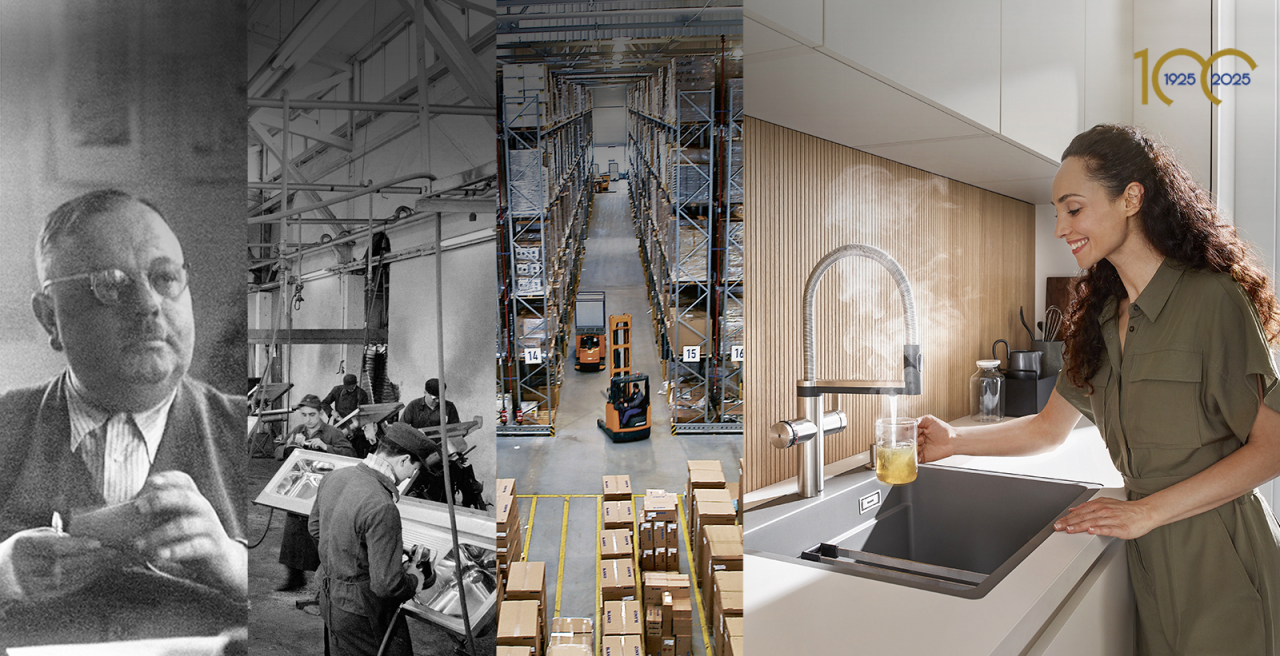For 100 years, BLANCO has been a pioneer in the kitchen water zone, crafting exceptional products that continue to define how we interact with water in the heart of the home. The company has consistently anticipated emerging trends for decades and embraces innovation. BLANCO consistently pushes the boundaries of material science and design, setting new standards for the kitchen. Driven by a passion for innovation, deep technical expertise and an unwavering commitment to customer satisfaction, BLANCO has delivered solutions that meet the evolving needs of both homeowners and the market. This unwavering dedication has transformed BLANCO from a single-product manufacturer into a globally-recognized leader in smart kitchen water solutions.
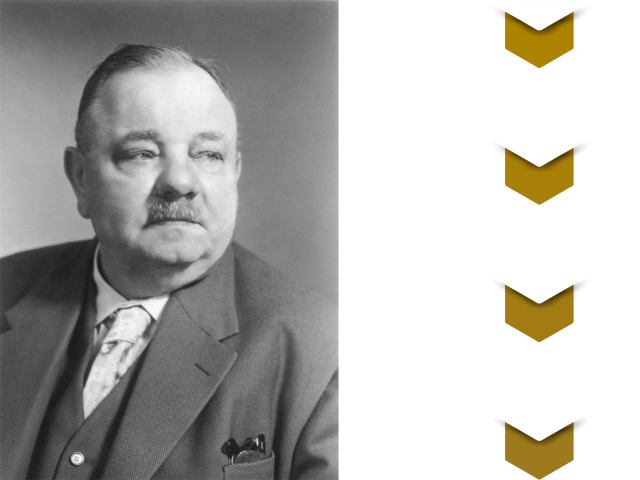
1925: The beginning of BLANCO
After Heinrich Blanc completed his training as a merchant, he founded the company "Blanc & Co. Metallwarenfabrik Oberderdingen" (hereinafter referred to as “BLANCO”) in 1925 at the age of 29. Thanks to his strong business acumen and pioneering spirit, the company grew at a rapid pace. Blanc’s leadership traits continue to shape the corporate culture to this day: The company founder combines reliability, responsibility and cost awareness with the ability to quickly recognize trends and influences. Heinrich Blanc died on April 8, 1960 at the age of 63. The company was continued by his son, Heinz Blanc, and later by his grandson Frank Straub.
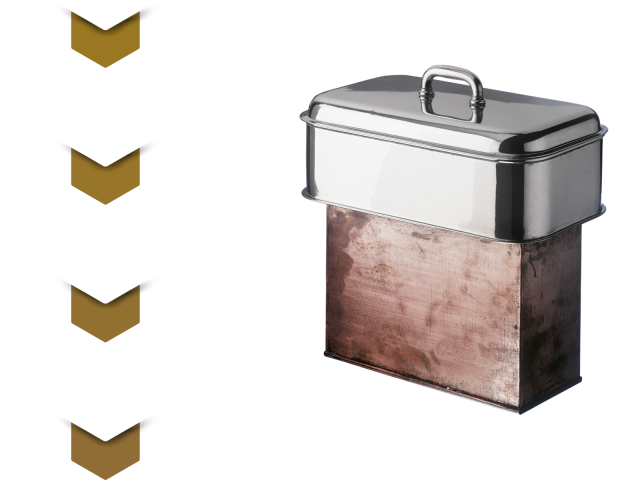
From market gap to kitchen staple
In the mid-1920s, people increasingly wanted constant access to hot water to make it easier to rinse, wash and cook. So-called stove water vessels, metal vessels used to heat water in an oven to operating temperature, were in high demand, but the supply was too low to match the rising demand. Heinrich Blanc filled this gap in the market with a product that can be produced quickly and cost-effectively. With its copper and tin-plated water trough, BLANCO established a kitchen water place within the home’s four walls and became one of the most important suppliers for stove factories at the time.
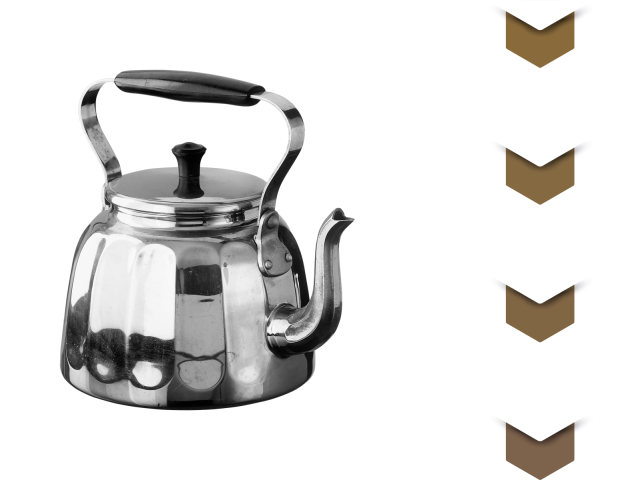
1930s: Expanding product portfolio
BLANCO grew its product portfolio in the 1930s in light of the advancing electrification of households and the increasing number of large electrical appliances. Based on its high level of material expertise, the company began manufacturing cookware, including kettles made of pure aluminum. The material was compatible for the requirements of electric cooking and made it possible for BLANCO to open up further application areas around the kitchen. From a single product manufacturer to a portfolio provider, BLANCO then reduced its dependence on stove factories and set its business model on a broader foundation.
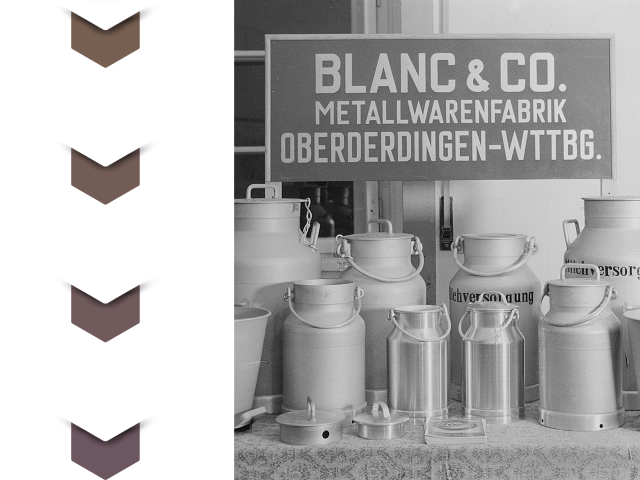
1940s: Material expertise
At the end of the 1940s, BLANCO participated in the first export trade fair after WWII in Hanover to present its portfolio to an international trade audience. BLANCO exhibited useful accessory products made from the new aluminum material Anticorodal. The particularly lightweight, yet resistant material is particularly suitable for business areas where corrosion protection is crucial for the longevity of a product. Pictured are milk jugs made from Anticorodal, which BLANCO developed with the agricultural and food industry in mind.

1950s: Into the future with stainless steel
In the middle of the twentieth century, Heinrich Blanc implemented a business idea that continues to shape BLANCO to this day: the production of sinks made from versatile stainless steel. Starting in 1951, the focus of production was on stainless steel sinks, and BLANCO launched theirs into the market just a year later. The company was the first supplier to produce two bowls from a single piece – a revolution for the kitchen sink. Figures show this development: The annual production of sinks increased from 4,000 units in 1954 to around 100,000 in 1959, and the product catalog featured over 100 different sink models at that time.
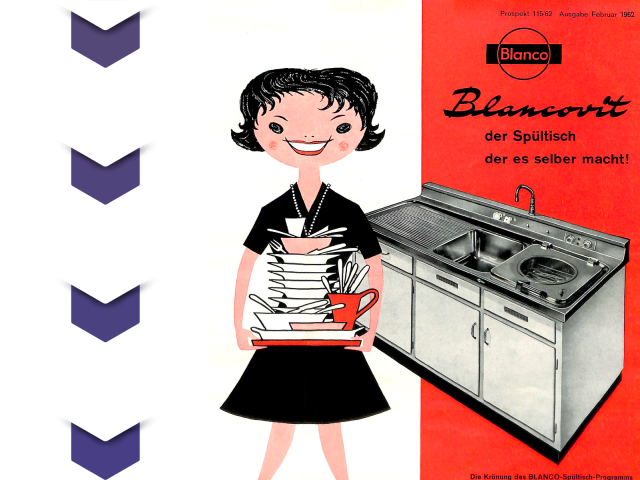
1960s: The kitchen water place takes shape
Step by step, BLANCO improved the aesthetics and functionality of the kitchen water place inside the home. In the 1960s, the company no longer saw the sink as a pure utility item, but wanted to inspire both retailers and end consumers with high-quality design. Functional features and technical innovations noticeably increased everyday comfort, making kitchen life easier. Examples of this are generous drains and sinks with built-in dishwashers.
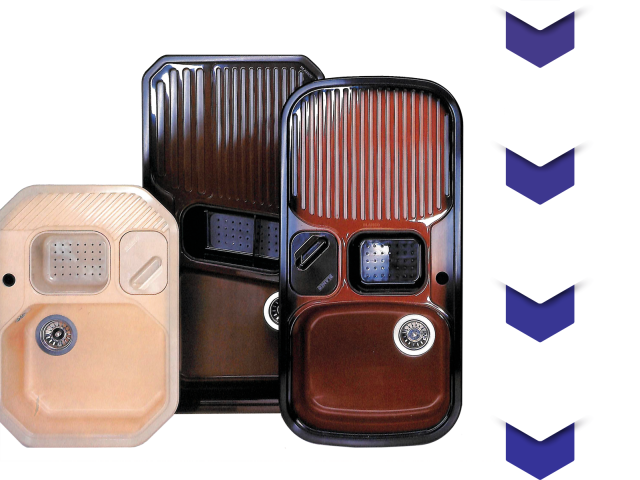
1970s: New materials – new possibilities
In the 1970s, BLANCO was very ambitious in advancing the use of new materials for the kitchen water place. BLANCO was the first company in the industry worldwide to market color sinks made of SILACRON (1981). The composite material expanded the design possibilities in the kitchen, as the kitchen water place can be color coordinated even more with the kitchen’s holistic design. BLANCO’s great success with SILACRON products at international trade fairs indicated the international marketing potential of the new sink models at an early stage.
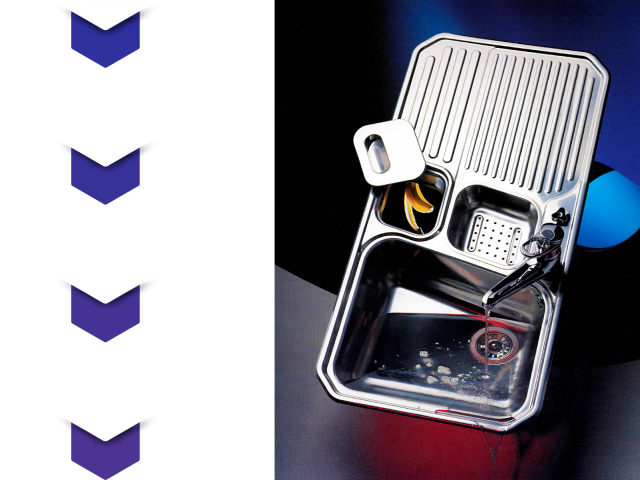
1980s: More than “just” a sink
In the mid-1980s, BLANCO continued to enhance the residential kitchen water place with more convenience and functionality. In this phase, the company presented a world first: BLANCOMULTI-BOX. The innovative sink with integrated waste chute and waste organization was the predecessor of the current BLANCO UNIT and marked a significant milestone in product development thanks to the first-ever integral interaction of various elements at the kitchen water place.
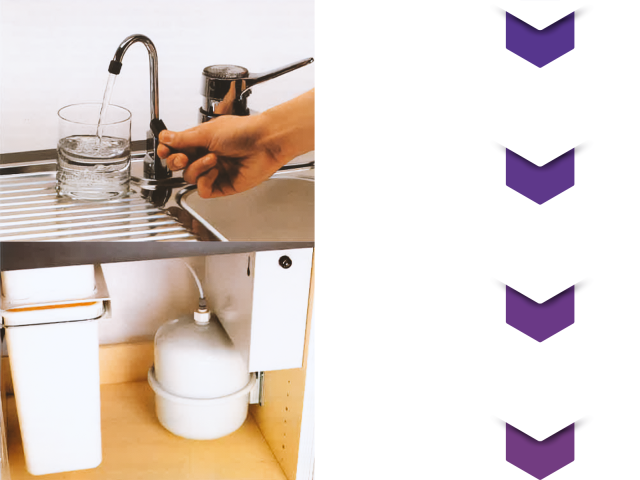
New water ways
As the 1980s progressed, more components of the kitchen water place emerged at BLANCO. This created new advantages and applications for end users: With BLANCOQUELL, the company introduced a filter system in its range that promised better tasting tap water.
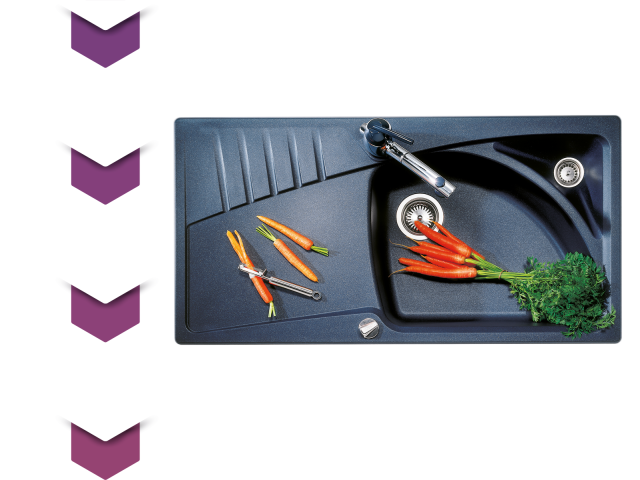
1990s: Silgranit enters the market
Upgrading the kitchen water place with practical faucets, new sink materials and colors and cabinet organization remained a declared goal of BLANCO throughout the 1990s. An example of this was the introduction of SILGRANIT: The durable granite material made of up to 80% quartz sand is adored for its easy-to-clean surface. The high-quality look and carefully curated color palette gave partners in trade and interior design the opportunity to incorporate individual design wishes even more effectively into kitchen planning. Years of design expertise was recognized by the professional world in 1997, when BLANCO received the Red Dot for BLANCOLUNA (predecessor of the international Red dot Award).
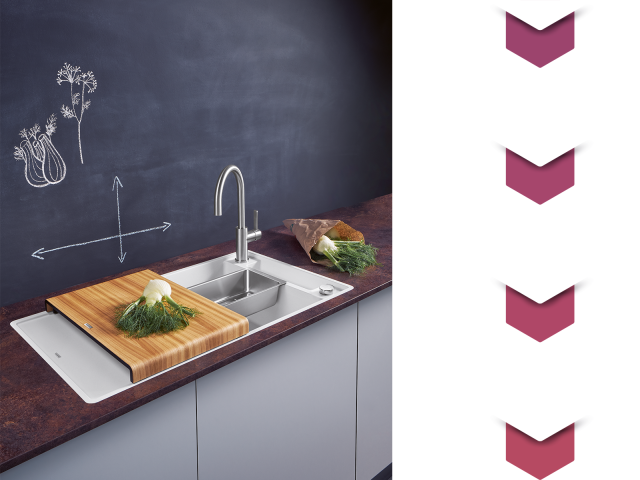
2000s: Making everyday life easier
At the turn of the millennium, BLANCO came up with the idea of an ergonomic kitchen water place: The goal was to ensure that end consumers should feel ease and joy in everyday kitchen life, and new functional design products such as the so-called AXen concept played an important role in this. Available in a variety of materials, sizes and designs, it enables smooth workflows along a continuous axis of movement with movable and ergonomic accessories. The AXen concept also paved the way for the subsequent joining of different areas of the kitchen water point to form a cohesive, functional unit.
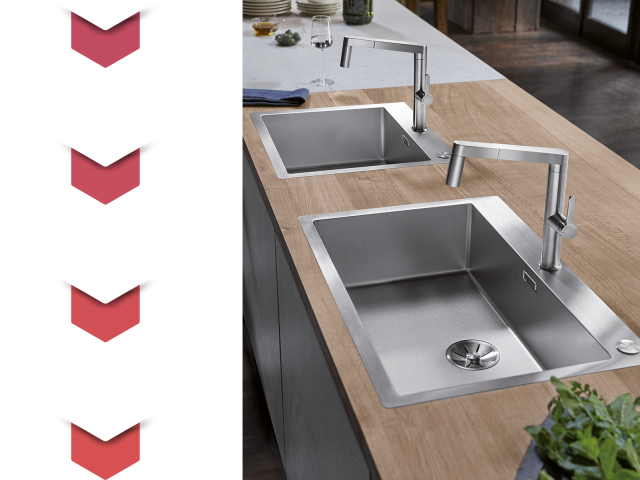
2010s: Patented quality
Stainless steel remained one of the most important production materials at BLANCO even in the 2010s. The company continuously developed the physical properties and appearance of the materials. The patented and award-winning DURINOX stainless steel is an example of this: The metal blasted in an innovative production process is more than twice as hard as conventional stainless steel surfaces, making it less sensitive to scratches and fingerprints.
The perfect kitchen water place
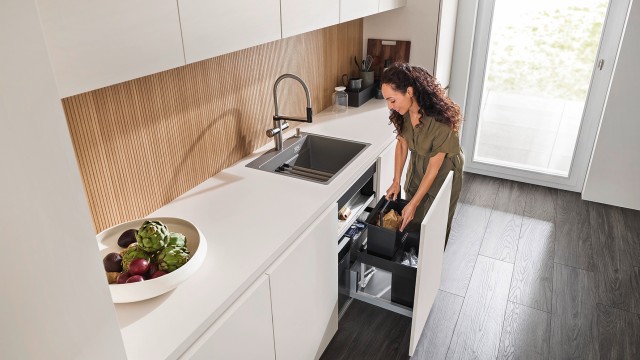
BLANCO raised the kitchen water place to a new level in the early 2020s with the introduction of the BLANCO UNIT. The customizable combination of sink, faucet, filtration, and complementary meal prep accessories as well as the well-thought-out base cabinet organization were combined in a multifunctional unit for the first time. This solution-oriented approach to design created a holistic product experience for consumers, characterized by functionality, design and comfort. Now BLANCO is introducing a workstation sink that anticipates your every move with INTEOS, the next culinary powerhouse.
